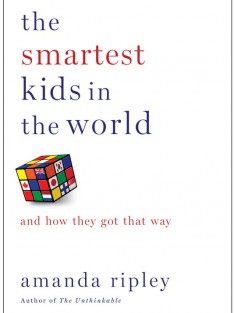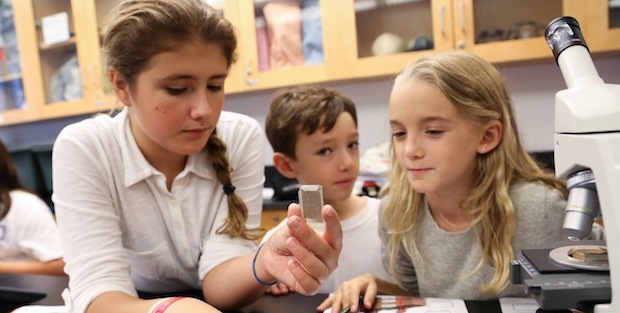The early morning at the the Lycée Français de New York is a wonderful time because it is then that we welcome our students to school. It is also when we have the opportunity to engage in many a thought-provoking conversation about education.
“Mr. Lynch, by any chance have you read Amanda Ripley’s The Smartest Kids in the World?” one parent recently asked me. “I found it quite interesting,” she went on, “because if I understand correctly Ripley believes that rigor is THE secret to excellence and rigor is held in high esteem at the Lycée.” “That was how I read her argument as well,” I replied, adding “and I too felt she could easily have been talking about the LFNY.”
“Teaching kids to think for themselves”

Published this fall by Simon & Schuster and written by investigative journalist Amanda Ripley, The Smartest Kids in the World: And How They Got That Way begins by underscoring the importance of something known as PISA. 14 years ago, Andreas Schleicher and a team of statisticians at the Organization for Economic Cooperation and Development in Paris started evaluating approximately 300,000 15 year-olds from more than 40 countries around the globe on the basis of a new test they had created called the Program for International Student Assessment (PISA).
This examination was unlike other transnational tests in that it did not attempt “to assess what kids had memorized, or what their teachers had drilled into their heads in the classroom,” but sought to “reveal which countries were teaching kids to think for themselves” (p. 14).
For Ripley, as well as for many experts in the field of education, how well a teenager is able to do on PISA is an excellent indicator of how well he or she is likely to do later in life, beyond both the home and the classroom, when he or she has to meet the challenges of the 21st century on his or her own. Moreover, that result also sheds light on the effectiveness of the national educational system from which each 15 year-old comes.
Organized in the years 2000, 2003, 2006, 2009 and 2012, PISA scores suggest what the journalist calls a “treasure map of the world”, ie. nations whose schools should be sources of inspiration and emulation for everyone else. “Most successful or improving countries seemed to fit into three basic categories,” Riley affirms. “1) the utopia model of Finland, a system built on trust in which kids achieved higher-order thinking without excessive competition or parental meddling; 2) the pressure-cooker model of South Korea, where kids studied so compulsively that the government had to institute a study curfew; and 3) the metamorphosis model of Poland, a country on the ascent” (p. 24).
Parents involvement and teachers professional development
Ripley then analyzes the Finnish, South Korean and Polish cases in depth, thanks to three American high school students who leave the United States to study in these countries and whose personal experiences the journalist chronicles with considerable care. What Ripley learns is multi-dimensional. The most successful educational systems seemed to be those in which parents demonstrate constant interest in what their children are learning in school (p. 112) and in which teachers are the “best and the brightest of each generation” (p. 89) engaged in continuous professional development.
Yet, and here is the point which clearly drew our attention one snowy morning a few weeks ago, Ripley appears to be arguing above all else that the strongest schools, no matter where they are located across the globe, are those in which the top priority is helping “students master complex academic material.”(p. 117). For her, in the conclusion of a compelling report, “to give our kids the kind of education they deserved, we had first to agree that rigor mattered most of all; that school existed to help kids learn to think, to work hard, and, yes, to fail. That was the core consensus that made everything else possible” (p. 193).
What do you think, members of the Lycée Français community who might be reading this blog, does Ripley’s rigor sound like our own rigueur? If you are interested in joining a fascinating conversation on this topic, please let me know!
Learn more about PISA on the OECD website.
About the Author :
Sean Lynch was Head of School at the Lycée Français de New York from 2011 to 2018, after having spent 15 years at another French bilingual school outside of Paris: the Lycée International de St. Germain-en-Laye. Holding both French and American nationalities, educated in France (Sciences Po Paris) and the United States (Yale), and as the proud husband of a French-American spouse and father of two French-American daughters, Sean Lynch has spent his entire professional and personal life at the junction between the languages, cultures and educational systems of France and the United States. In addition to being passionate about education, he loves everything related to the mountains, particularly the Parc National du Mercantour.

